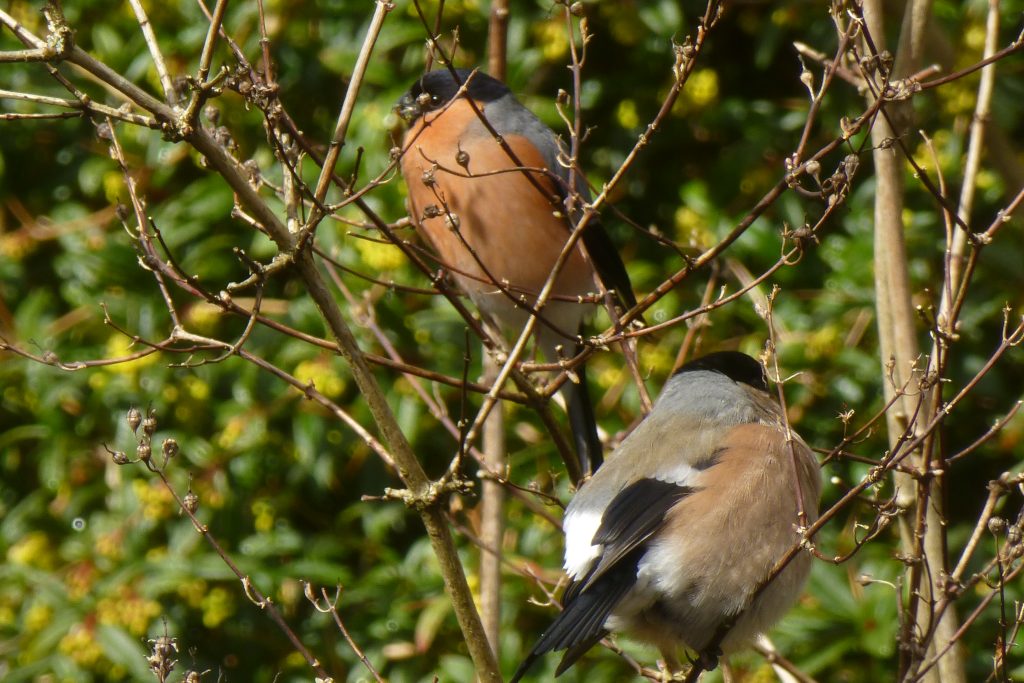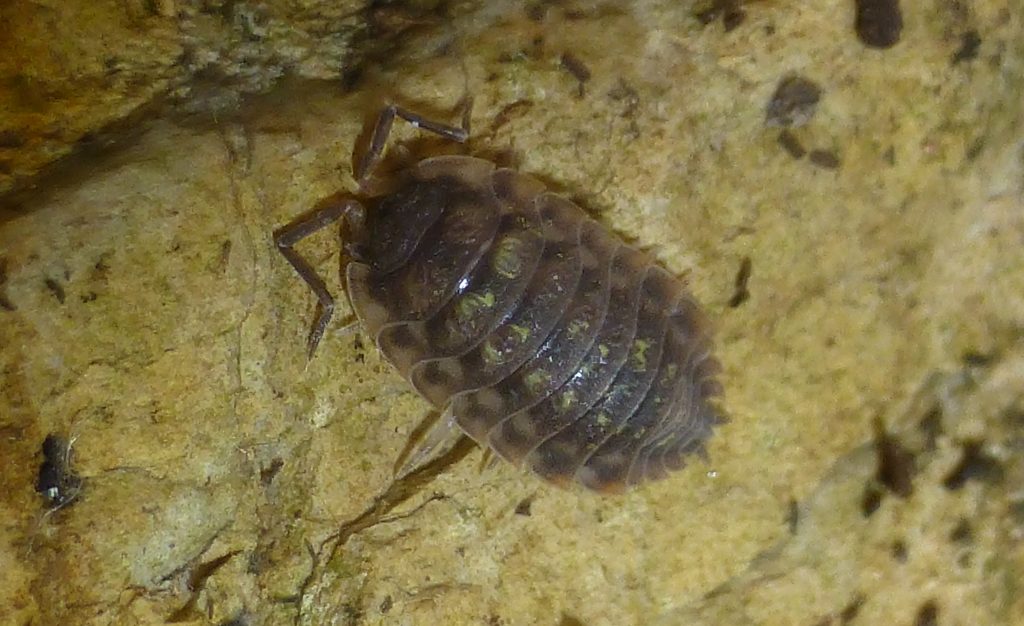
Male (top) and female (bottom) Bullfinches (Pyrrhula pyrrhula), Chinese Hillside, 31 March. Photo Robert Mill.
March 2015 was another chilly month that ended, just after “Summer” Time began, with showers of hail and sleet. Two species were added to the Garden’s invertebrate list during March, and Wood Warbler was added to the bird list on the basis of a record from 9 May 2013 that was only recently unearthed from the literature. The list total at the end of March therefore stood at 746.
Birds Forty-two bird species were definitely recorded in the Garden during February, plus another two possible sightings. Yet another species was recorded for the first time since 1997 – Coot. This is the third month in a row that this has happened. The last time Coot visited the Garden was in 1986. This is strange, since they are resident (and usually breed) on nearby Inverleith Pond. A Woodcock was seen on 9th while a flock of at least 20 Whooper Swans flew northwest over the Garden on the evening of 25th. As in February, Buzzard (6th) and Grey Wagtail (11th) were reported. Kingfisher was seen on 20 days during the month, mostly in the first half; records tailed off later, possibly because one was (thankfully unsuccessfully) attacked by a Sparrowhawk and this may have made the bird, or birds, more wary. There were single records of both Redwing and Siskin. Unconfirmed records of Nuthatch (15th) and Chiffchaff (17th, 19th) were made; the possible Nuthatch was at the feeder on the Malus lawn but the sighting was too brief for confident identification, while the Chiffchaff records were both on the basis of putative contact calls that were heard in the vicinity of the Chinese Hillside, a regular territory for the species. The records are not confirmed because other species, especially Chaffinch which is numerous in the Garden, have similar contact calls. No singing Chiffchaff had been heard in the Garden by the month’s end, which is unusual as it is normally our earliest migrant songster. One migrant species did return: Lesser Black-backed Gull, first seen in the Garden on 18th. The full list of species recorded was: Blackbird, Blackcap, Black-headed Gull, Blue Tit, Bullfinch, Buzzard, Carrion Crow, Chaffinch, Coal Tit, Coot, Cormorant, Dunnock, Feral Pigeon, Goldcrest, Goldfinch, Great Spotted Woodpecker, Great Tit, Greenfinch, Grey Heron, Grey Wagtail, Herring Gull, Jackdaw, Kingfisher, Long-tailed Tit, Magpie, Mallard, Mistle Thrush, Moorhen, Oystercatcher, Pheasant, Redwing, Robin, Siskin, Song Thrush, Sparrowhawk, Stock Dove, Tawny Owl, Tree Creeper, Wood Pigeon, Wren, plus possible Chiffchaff, Nuthatch.

Common Striped Woodlouse (Philoscia muscorum), Cryptogamic Garden, 12 March 2015. Photo Robert Mill.
Insects and other invertebrates: Once again there were rather few records of these because of persistent chilly weather. On one of the warmer sunny days a Peacock butterfly was seen (18th, the only butterfly of the month). The first Honey Bees (from 19th), Common Carder Bee (25th) and Black Ant (from 23rd) were seen, as well as the earliest definite Buff-tailed Bumble-bees. The bees were between one and two weeks later in appearing compared with last year, when other species such as Early Bumblebee were also seen in March. The only hoverfly was the drone fly Eristalis tenax on 5th whereas last year five hoverfly species were recorded. Muscina levida was a new fly record and three other species were seen. Pine Ladybirds were seen on the barks of various tree species on several days during the month (from 5th, a week earlier than 2014) and a 7-spot Ladybird was spotted on 25th (much earlier than 2014’s first record of 9 May). Common Striped Woodlouse Philoscia muscorum (12th) was the other new invertebrate record of the month.
